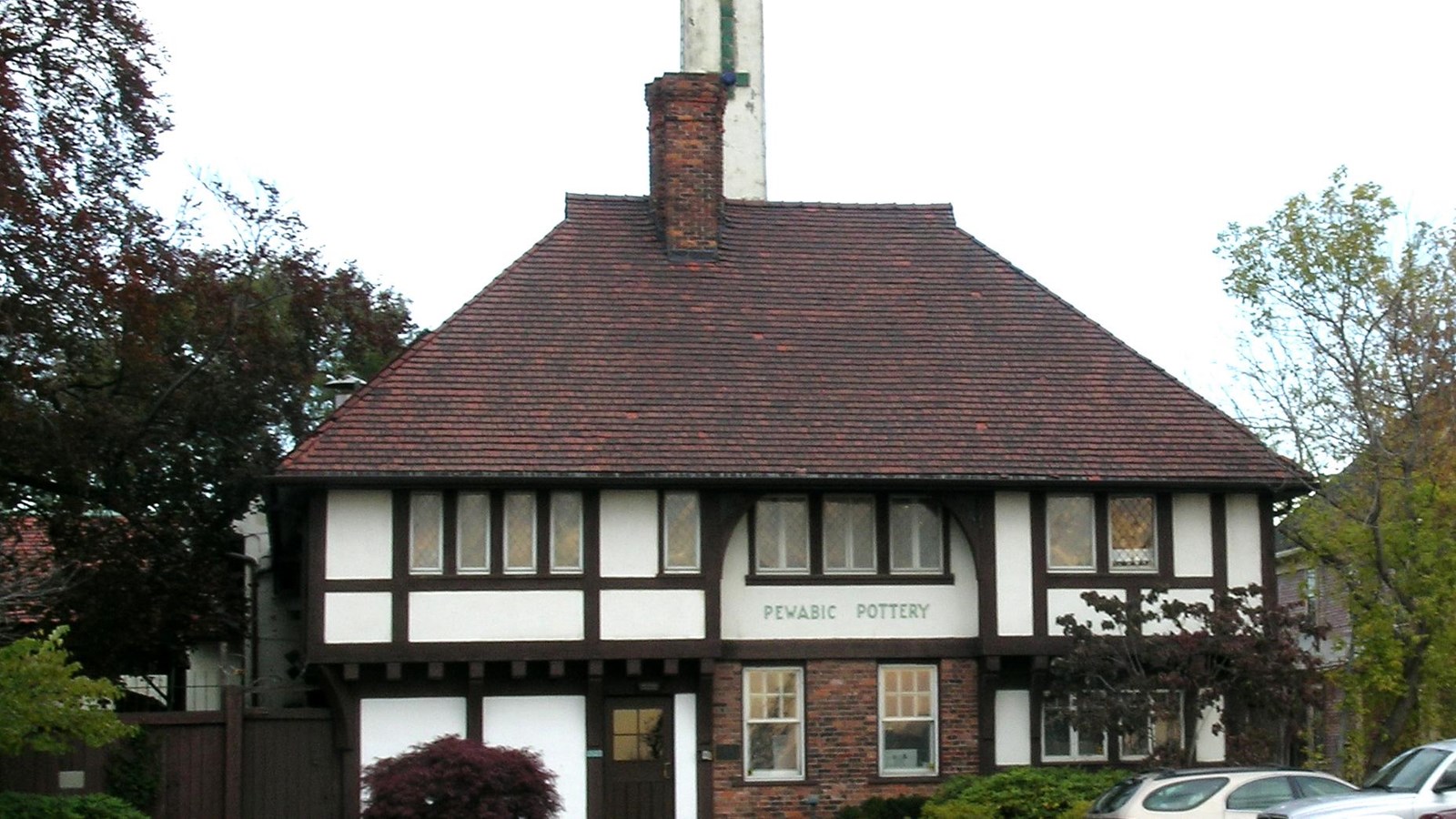Last updated: August 30, 2020
Place
Pewabic Pottery

Photo by Andrew Jameson, CC BY-SA 3.0, https://commons.wikimedia.org/w/index.php?curid=5112273
Pewabic Pottery, a pottery studio, was established in 1903 by ceramic artist Mary Chase Perry. Pewabic is a Chippewa Indian term that means "clay with a copper color." Concerned with raising the artistic standards of American ceramicists and influenced by the Arts and Crafts movement, Perry enjoyed designing pottery pieces in simple shapes and used spectacular irridescent glazes in rose, green, gold, purple, and copper. She was known for her early china painting work and brought her studio national fame by innovating an unusual iridescent glaze.
Born in Michigan’s Upper Peninsula in 1867, Perry was interested in art from a young age. As a child she painted eggshells and fabrics and even sold ornately decorated Christmas cards. After attending art school, Mary Chase Perry partnered with Horace Caulkins, inventor of high heat kilns. He had developed a new kiln that fired pottery at very high temperatures. Using this kiln, Perry experimented with clay glazes, eventually creating the signature iridescent glaze associated with Pewabic Pottery.
This type of pottery quickly became popular, and many Detroit residents and businesses placed orders for pottery pieces and iridescent tiles. Partners in business, Perry worked as the chief artist while Caulkins managed the business side. Under Perry's leadership, Pewabic Pottery gained national recognition for its iridescent glazes, as well as for its production of architectural tiles that were installed in such buildings as the Guardian Building and the Detroit Institute of Art.
As the popularity of Pewabic Pottery grew, Perry and Caulkins needed a larger workspace. In 1907, they hired Frank D. Baldwin and William B. Stratton to build the Pewabic Pottery studio. The men were two of the most influential architects in Detroit during the early twentieth century. Mary Chase Perry and William Stratton later married in 1917.
The Pewabic Pottery building has changed little since its construction and the original cabinets, tables, clay-making machine, and dumbwaiter are still in use today by the ceramists of the Pewabic Society. The studio was designated a National Historic Landmark in 1991.
Discover more history and culture by visiting the Detroit travel itinerary.
Select Sources:
Gibson, Arthur Hopkins. Artists of Early Michigan: A Biographical Dictionary of Artists Native to or Active in Michigan, 1701-1900. Detroit, Michigan: Wayne State University Press, 1975.
Miller, Page Putnam. Landmarks of American Women’s History. Oxford University Press, 2004.
Pewabic Pottery National Register Listing: https://npgallery.nps.gov/AssetDetail/NRIS/71000430
